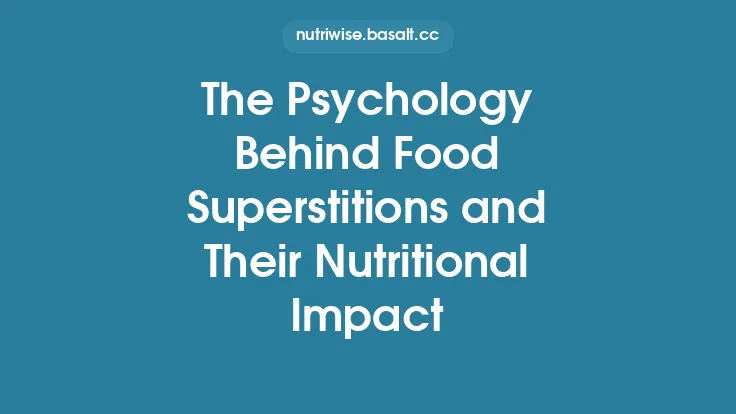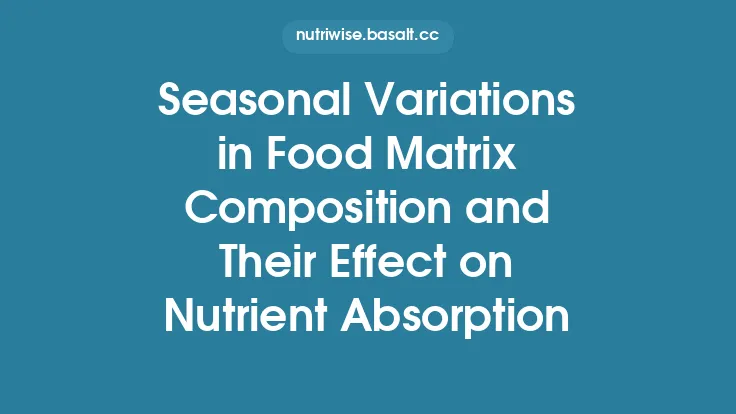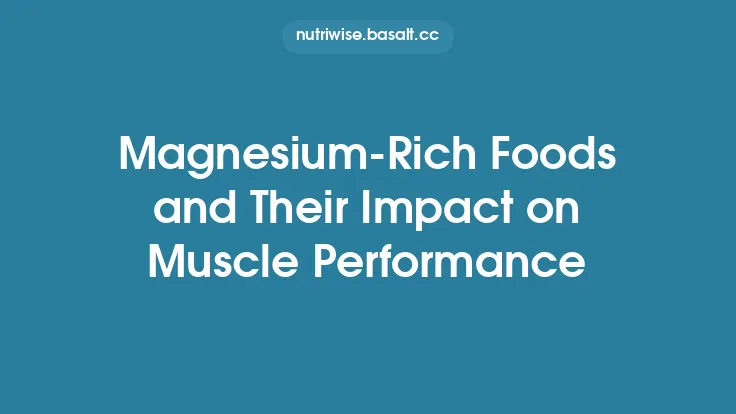The ways societies have preserved food over millennia reveal a fascinating interplay between ingenuity, environment, and nutrition. Long before refrigeration, people devised methods that not only extended shelf life but also altered the biochemical composition of foods, sometimes enhancing their health benefits and at other times diminishing essential nutrients. Understanding these historical storage techniques offers insight into how ancient peoples managed food security, how the nutritional profile of staple items evolved, and what lessons modern food systems can draw from the past.
Early Drying and Sun‑Curing
Drying is arguably the oldest preservation method, relying on the removal of moisture to inhibit microbial growth. Early humans spread grains, fruits, herbs, and meat on rocks or woven mats, allowing wind and sunlight to evaporate water. The process reduces water activity (a_w) to levels below 0.6, a threshold at which most bacteria and molds cannot proliferate.
Nutritional impact:
- Concentration of nutrients: As water is removed, macronutrients (carbohydrates, proteins, fats) become more concentrated per gram, providing a denser energy source.
- Loss of heat‑sensitive vitamins: Vitamin C and some B‑vitamins degrade under prolonged exposure to heat and UV radiation. For example, sun‑dried fruits can lose up to 30‑40 % of their vitamin C content.
- Enhanced bioavailability of certain compounds: Drying can break down cell walls, making some antioxidants more accessible. In dried legumes, the reduction of antinutritional factors such as phytic acid can improve mineral absorption.
Salting and Brining
Salt has been a cornerstone of preservation across cultures, from the Roman garum to Japanese miso. By creating a hypertonic environment, salt draws water out of microbial cells through osmosis, effectively dehydrating and killing them. Brining—submerging food in a saltwater solution—also allows for controlled diffusion of salt into the food matrix.
Nutritional impact:
- Protein denaturation and flavor development: Salt induces protein unfolding, which can improve texture and enhance the development of savory flavors (umami). This can make protein more palatable and easier to digest.
- Sodium increase: While essential for electrolyte balance, excessive sodium can raise blood pressure. Historical diets often balanced high‑salt foods with low‑salt staples, a practice that modern diets sometimes overlook.
- Preservation of essential fatty acids: In salted fish, the high salt concentration slows oxidation, helping retain omega‑3 fatty acids that would otherwise degrade.
Fermentation
Fermentation harnesses the metabolic activity of microorganisms—yeasts, lactic acid bacteria, and molds—to transform food. The process produces organic acids (lactic, acetic), alcohols, and carbon dioxide, which lower pH and create inhospitable conditions for spoilage microbes. Classic examples include kimchi, sauerkraut, fermented fish sauces, and dairy products such as kefir.
Nutritional impact:
- Probiotic enrichment: Live cultures can colonize the gut, supporting a balanced microbiome and improving digestion of complex carbohydrates.
- Synthesis of vitamins: Certain lactic acid bacteria synthesize B‑vitamins (e.g., B12, riboflavin) during fermentation, boosting the micronutrient profile of otherwise modest foods.
- Reduction of antinutrients: Fermentation can degrade phytates and lectins, enhancing mineral bioavailability (iron, zinc, calcium).
- Potential formation of biogenic amines: Over‑fermentation may lead to compounds like histamine, which can cause adverse reactions in sensitive individuals.
Smoking
Smoking combines dehydration with the antimicrobial properties of phenolic compounds released from wood combustion. The process can be hot (cooking) or cold (preserving raw texture). Traditional smoked meats and fish, such as smoked salmon or jerky, rely on this method.
Nutritional impact:
- Preservation of protein and fats: The rapid drying and antimicrobial environment protect proteins and lipids from spoilage.
- Introduction of polycyclic aromatic hydrocarbons (PAHs): Incomplete combustion can deposit PAHs, some of which are carcinogenic. Traditional low‑temperature smoking mitigates this risk compared to modern high‑heat industrial smoking.
- Flavor compounds: Phenols and carbonyls impart smoky aromas, which can stimulate appetite and increase perceived satiety.
Pickling in Acidic Media
Pickling involves submerging food in an acidic solution—vinegar, citrus juice, or naturally fermented brine—to achieve a pH below 4.5. The acidic environment halts bacterial growth and preserves texture.
Nutritional impact:
- Retention of heat‑stable nutrients: Since pickling is typically a cold process, vitamins like vitamin K and certain antioxidants remain largely intact.
- Enhanced mineral absorption: The acidic medium can increase solubility of minerals such as calcium and magnesium, facilitating absorption.
- Increased sodium content: Like salting, pickling often involves added salt, contributing to higher sodium intake.
Underground Storage (Root Cellars, Pit Caches)
Before modern refrigeration, many societies built insulated underground chambers to exploit the earth’s stable temperature (≈10–15 °C) and high humidity. Root vegetables (potatoes, carrots), tubers, and some fruits were stored in these cellars, often layered with straw or ash to regulate moisture.
Nutritional impact:
- Minimal nutrient loss: Low temperatures slow enzymatic activity and oxidation, preserving vitamins, especially vitamin C in potatoes and carrots.
- Risk of sprouting and glycoalkaloid increase: Prolonged storage of potatoes at temperatures above 10 °C can trigger sprouting and raise solanine levels, a toxic glycoalkaloid. Proper cellar management (cool, dark, well‑ventilated) mitigates this risk.
- Preservation of complex carbohydrates: Starches remain stable, providing a reliable energy source during lean seasons.
Ice and Snow Preservation
In polar and high‑altitude regions, ice houses and snow pits were used to keep perishable foods cool. Ice was harvested in winter and insulated with sawdust or straw for year‑round use. This method allowed for the storage of dairy, meat, and fish.
Nutritional impact:
- Retention of delicate nutrients: Cold temperatures preserve heat‑sensitive vitamins (C, B‑complex) and unsaturated fatty acids, which would otherwise oxidize at higher temperatures.
- Reduced microbial growth: Low temperatures inhibit most bacterial metabolism, extending shelf life without altering the food’s intrinsic nutritional composition.
- Potential for freezer burn: Improper sealing can cause dehydration and oxidation of surface layers, leading to texture loss and minor nutrient degradation.
Oil and Fat Sealing
In Mediterranean and Middle Eastern cultures, foods such as cheese, herbs, and cooked vegetables were submerged in olive oil. The oil creates an anaerobic barrier, limiting oxygen exposure and microbial invasion.
Nutritional impact:
- Enrichment with monounsaturated fats: Olive oil adds heart‑healthy oleic acid, enhancing the overall fatty acid profile of the stored food.
- Preservation of fat‑soluble vitamins: Vitamins A, D, E, and K are protected from oxidation within the oil matrix.
- Risk of lipid oxidation: If stored at elevated temperatures or exposed to light, the oil itself can oxidize, forming peroxides that may compromise both the oil and the food.
Ceramic and Glass Vessels with Sealed Lids
The development of pottery and later glass allowed for airtight storage of dried grains, legumes, and fermented liquids. Ceramic jars could be glazed to reduce porosity, while glass bottles provided a clear, inert barrier.
Nutritional impact:
- Protection from pests and moisture: Airtight seals prevent insect infestation and moisture ingress, preserving nutrient integrity.
- Potential leaching of minerals: Certain glazes containing lead or cadmium, used historically, could leach into acidic foods, posing health risks. Modern reproductions avoid these contaminants.
- Light protection: Opaque ceramics shield light‑sensitive nutrients (e.g., riboflavin) from degradation.
Comparative Overview of Nutritional Outcomes
| Technique | Primary Preservation Mechanism | Key Nutrient Benefits | Notable Nutrient Drawbacks |
|---|---|---|---|
| Drying / Sun‑curing | Water activity reduction | Concentrated macronutrients; enhanced antioxidant accessibility | Loss of vitamin C & heat‑sensitive B‑vitamins |
| Salting / Brining | Osmotic dehydration | Protein denaturation improves digestibility; retention of omega‑3s in fish | Elevated sodium; possible mineral imbalances |
| Fermentation | Acidic pH & microbial competition | Probiotic cultures; B‑vitamin synthesis; reduced antinutrients | Biogenic amine formation if over‑fermented |
| Smoking | Dehydration + phenolic antimicrobials | Flavor compounds stimulate satiety; preservation of fats | PAH formation; potential carcinogens |
| Pickling | Acidic environment (pH < 4.5) | Mineral solubility; retention of heat‑stable vitamins | High sodium; possible loss of texture |
| Underground storage | Stable cool temperature & humidity | Minimal vitamin loss; stable starches | Risk of sprouting/toxin buildup in certain crops |
| Ice / Snow | Near‑freezing temperatures | Preservation of heat‑sensitive nutrients & unsaturated fats | Freeze‑burn if not sealed |
| Oil sealing | Anaerobic barrier | Enrichment with monounsaturated fats; protection of fat‑soluble vitamins | Oxidation risk if exposed to light/heat |
| Ceramic / Glass vessels | Airtight seal | Protection from pests/moisture; light shielding | Potential leaching from hazardous glazes (historical) |
Lessons for Modern Food Systems
- Synergy of Multiple Methods: Many historical practices combined techniques—e.g., salted and smoked fish—to achieve longer shelf life and complementary nutritional effects. Modern preservation can adopt similar multi‑step approaches, such as combining mild salting with controlled fermentation, to reduce reliance on synthetic additives.
- Nutrient‑Focused Preservation: Understanding which nutrients are vulnerable to specific preservation stresses (heat, light, oxygen) enables targeted interventions. For instance, using low‑temperature drying (freeze‑drying) preserves vitamin C while still reducing water activity.
- Cultural Adaptation to Environment: Historical methods were tailored to local climates and resources. Contemporary food security strategies can draw on this principle by promoting region‑specific preservation technologies—e.g., solar‑dryers in arid zones, underground cool stores in temperate regions.
- Health Implications of Additives: The high sodium content of many traditional preservation methods underscores the need for balanced dietary planning. Modern reformulations can incorporate potassium‑based salts or flavor‑enhancing herbs to maintain palatability while reducing sodium.
- Microbial Ecology as a Tool: Fermentation demonstrates how harnessing beneficial microbes can improve both safety and nutrition. Expanding the repertoire of cultured strains (including non‑traditional lactic acid bacteria) may unlock new nutrient profiles and functional foods.
Concluding Reflections
Historical food storage techniques were not merely survival strategies; they actively reshaped the nutritional landscape of societies. By removing water, altering pH, introducing beneficial microbes, or creating protective barriers, ancient peoples inadvertently engineered foods with distinct macro‑ and micronutrient profiles. While some methods led to nutrient losses, others enhanced bioavailability, introduced probiotic benefits, or fortified foods with new vitamins.
In an era where food waste and nutritional deficiencies remain pressing challenges, revisiting these time‑tested practices offers a reservoir of knowledge. Integrating the wisdom of drying, salting, fermenting, and other age‑old methods with contemporary food science can yield preservation solutions that are both sustainable and nutritionally optimized—honoring the legacy of our ancestors while feeding the needs of tomorrow.





